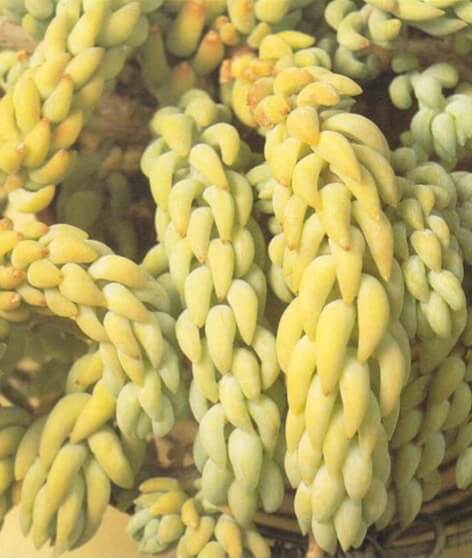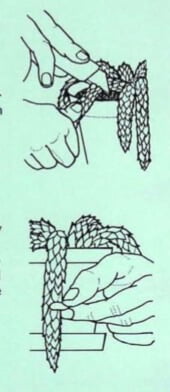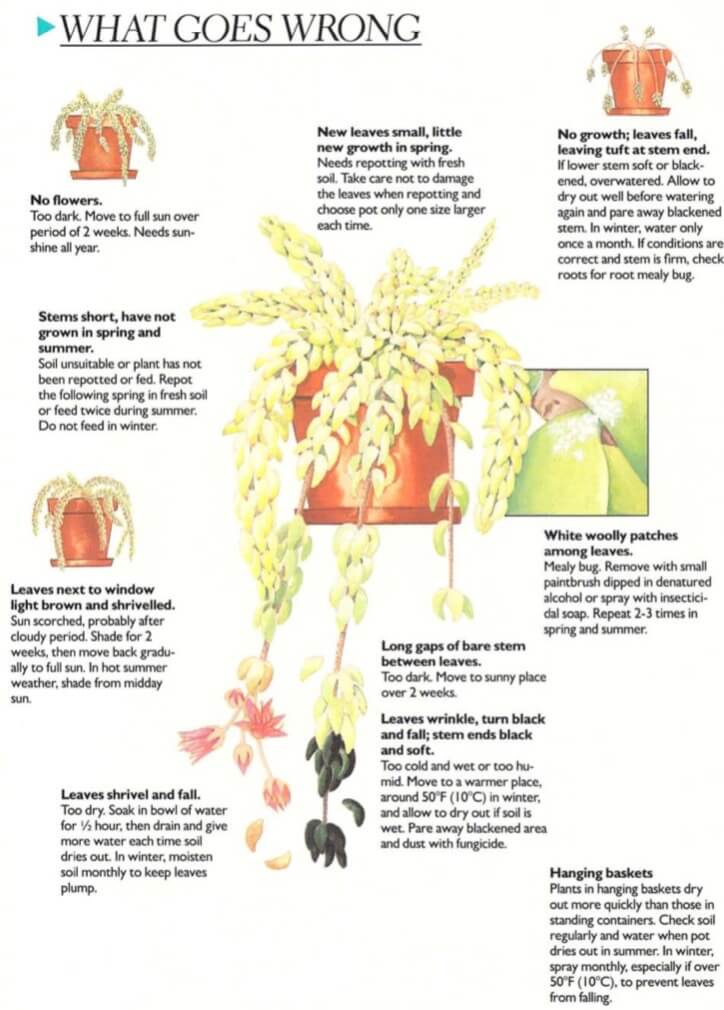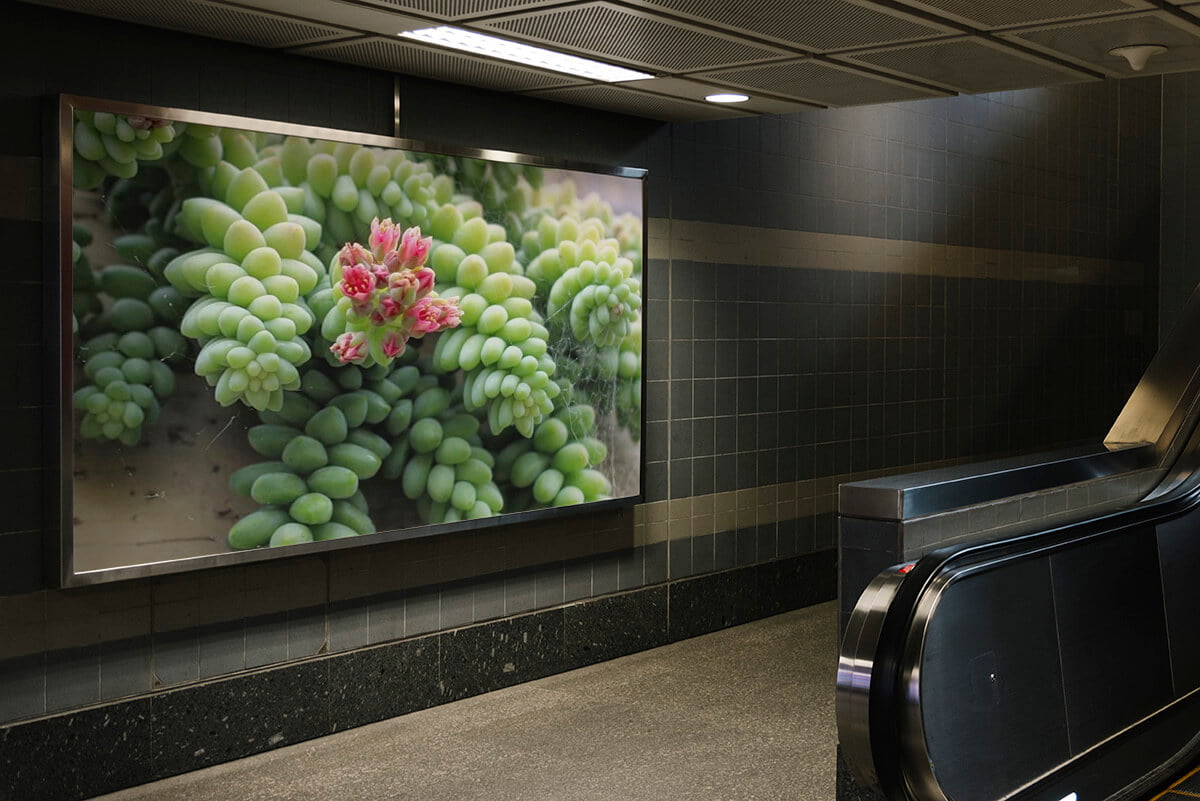[Ebook Việt Hoá] The Instant Guide to Healthy Houseplants (Hướng dẫn tức thời để chăm cây trong nhà khoẻ mạnh), Chi Sedum
[Ebook Việt Hoá] The Instant Guide to Healthy Houseplants: Sedum morganiaum (Burro’s fall, Burro tail, Donkey’s tail, Lamb’s tail)
- Nguồn: [Ebook Việt Hoá] The Instant Guide to Healthy Houseplants (Hướng dẫn tức thời để chăm cây trong nhà khoẻ mạnh)
- Biên tập: Dũng Cá Xinh
- Biên dịch: Team Codai.net
English
One of a vast genus of succulent plants widespread in both tropical and temperate climates, this plant combines easy care with a touch of the exotic. Sedum morganianum,from Mexico, is one of the most attractive of this tender species, all of which have fleshy stems or leaves. It can be kept indoors or in a greenhouse and is ideal for a hanging basket. It does better out of the full glare of the sun in summer, but it needs good light all year. The stems will grow to about 3 feet (1 m) and cover a base area of about 8 inches (20 cm). Other good species, not for hanging baskets, are Sedum rubrotinctwn, especially ‘Aurora’, S. hintonii and S. furfuraceum.

Light
To bring out the best coloring, full sunshine is needed at all times.
Temperature
Many species will tolerate temperatures near freezing but are better kept at a minimum of 40°F (4°C) in winter. Give fresh air in summer.
Water
Once a month in winter, spray heavily or give just enough water to keep the soil from drying out completely. Water every two weeks in spring and summer, weekly in hottest weather. Decrease frequency in fall.
Feeding
If not repotted each year, use high-potash fertilizer not more than twice in the summer. Otherwise, feeding is unnecessary.
Soil
Use good loam-based potting soil or soilless media, with 30 percent sharp sand.
Repotting
Repot every spring into pot one size larger until in a 5-in (13-cm) pot or pan, then repot every other year. Always use a shallow pot, as the roots are short. Do not water for 2 weeks after repotting.
Propagation
Use whole-stem cuttings or leaf cuttings.
Taking cuttings
- 1. Cut stem 2 inches (5 cm) from end, between leaves, in late spring or early summer. Dust cut ends with hormone rooting powder to prevent infection, let dry for 2 days, then place cutting on dry soil. Do not water until roots appear.
- 2. Or ease off leaf from healthy stem with fingers and lay flat on dry soil with its base touching surface. Do not water until roots form and do not remove old leaf until quite dried out.

What Goes Wrong

- No flowers: Too dark. Move to full sun over period of 2 weeks. Needs sunshine all year.
- Stems short, have not grown in spring and summer: Soil unsuitable or plant has not been repotted or fed. Repot the following spring in fresh soil or feed twice during summer. Do not feed in winter.
- Leaves next to window light brown and shrivelled:Sun scorched, probably after cloudy period. Shade for 2 weeks, then move back gradually to full sun. In hot summer weather, shade from midday sun.
- Leaves shrivel and fall: Too dry. Soak in bowl of water for 1/2 hour, then drain and give more water each time soil dries out. In winter, moisten soil monthly to keep leaves plump.
- New leaves small, little new growth in spring: Needs repotting with fresh soil. Take care not to damage the leaves when repotting and choose pot only one size larger each time.
- No growth; leaves fall, leaving tuft at stem end: If lower stem soft or blackened, overwatered. Allow to dry out well before watering again and pare away blackened stem. In winter, water only once a month. If conditions are correct and stem is firm, check roots for root mealy bug.
- Long gaps of bare stem between leaves: Too dark. Move to sunny place over 2 weeks.
- Leaves wrinkle, turn black and fall; stem ends black and soft: Too cold and wet or too humid. Move to a warmer place, around 50°F (10°C) in winter, and allow to dry out if soil is wet. Pare away blackened area and dust with fungicide.
- White woolly patches among leaves: Mealy bug. Remove with small paintbrush dipped in denatured alcohol or spray with insecticidal soap. Repeat 2-3 times in spring and summer.
- Hanging baskets: Plants in hanging baskets dry out more quickly than those in standing containers. Check soil regularly and water when pot dries out in summer. In winter, spray monthly, especially if over 50°F (10°C), to prevent leaves from falling.
Tiếng Việt
Là một trong những loài cây mọng nước rộng lớn phổ biến ở cả khí hậu nhiệt đới và ôn đới, loài cây này kết hợp việc chăm sóc dễ dàng với vẻ đẹp kỳ lạ. Sedum morganianum, đến từ Mexico, là một trong những loài hấp dẫn nhất của loài này, tất cả đều có thân hoặc lá nhiều thịt. Nó có thể được trồng trong nhà hoặc trong nhà kính và rất lý tưởng trên giỏ treo. Nó phát triển tốt hơn khi không phải đối diện ánh nắng chói chang vào mùa hè, nhưng nó cần ánh sáng tốt quanh năm. Thân cây sẽ phát triển đến khoảng 3 feet (1 m) và bao phủ diện tích cơ sở khoảng 8 inch (20 cm). Các loài tốt khác, không dùng để treo giỏ, là Sedum rubrotinctwn, đặc biệt là ‘Aurora’, S. hintonii và S. furfuraceum.

Ánh sáng
Để mang lại màu sắc đẹp nhất, luôn cần có ánh nắng mặt trời đầy đủ.
Nhiệt độ
Nhiều loài sẽ chịu được nhiệt độ gần như đóng băng nhưng tốt hơn là được giữ ở mức tối thiểu là 40 ° F (4 ° C) vào mùa đông. Cung cấp không khí trong lành vào mùa hè.
Nước
Mỗi tháng một lần vào mùa đông, phun nhiều hoặc chỉ tưới nước vừa đủ để giữ cho đất không bị khô hoàn toàn. Tưới nước hai tuần một lần vào mùa xuân và mùa hè, hàng tuần khi thời tiết nóng nhất. Giảm tần suất vào mùa thu.
Bón phân
Nếu không thay chậu mỗi năm, sử dụng phân bón có hàm lượng kali cao không quá hai lần vào mùa hè. Nếu không, việc bón phân là không cần thiết.
Đất
Sử dụng đất bầu tốt làm từ mùn hoặc giá thể không có đất, với 30% cát sắc.
Thay chậu
Thay vào chậu lớn hơn mỗi mùa xuân cho đến khi trong chậu khoảng 5 inch (13 cm), sau đó thay chậu cách năm. Luôn luôn sử dụng một chậu nông, vì rễ rất ngắn. Không tưới nước trong vòng 2 tuần sau khi thay chậu.
Nhân giống
Dùng giâm cả thân hoặc giâm lá.
Giâm cành
- 1. Cắt thân 2 inch (5 cm) từ cuối, giữa các lá, vào cuối mùa xuân hoặc đầu mùa hè. Phủ lên vết cắt bằng bột kích tố ra rễ để ngăn ngừa nhiễm trùng, để khô trong 2 ngày, sau đó đặt vết cắt trên đất khô. Không tưới nước cho đến khi rễ xuất hiện.
- 2. Hoặc dùng ngón tay xoa nhẹ lá khỏi thân khỏe mạnh và đặt phẳng trên đất khô với bề mặt chạm vào gốc. Không tưới cho đến khi rễ hình thành và không ngắt lá già cho đến khi khô hẳn.

Những vấn đề có thể xảy ra

- Không có hoa: Quá tối. Di chuyển đến nơi có ánh nắng đầy đủ trong khoảng thời gian 2 tuần. Cần nắng quanh năm.
- Thân ngắn, không phát triển vào mùa xuân và mùa hè: Đất không thích hợp hoặc cây chưa được thay chậu hoặc bón phân. Thay chậu vào mùa xuân năm sau trong đất tươi hoặc bón phân 2 lần trong mùa hè. Không bón phân vào mùa đông.
- Lá cạnh cửa sổ màu nâu nhạt và quăn lại: Cháy nắng. Che mát trong 2 tuần, sau đó chuyển dần ra ánh nắng đầy đủ. Trong thời tiết mùa hè nóng bức, che mát khỏi ánh nắng giữa trưa.
- Lá héo và rụng: Quá khô. Ngâm trong nước khoảng 1/2 giờ, sau đó để ráo và tưới thêm nước mỗi khi đất khô lại. Vào mùa đông, làm ẩm đất hàng tháng để giữ cho lá tươi tốt.
- Các lá mới nhỏ, ít mọc mới vào mùa xuân: Cần thay chậu bằng đất mới. Chú ý không làm hư lá khi thay chậu và chọn chậu lớn hơn mỗi lần thay.
- Không tăng trưởng; lá rụng, để lại cụm ở đầu thân: Nếu thân dưới mềm hoặc bị thâm đen, bị úng. Để cho thật khô trước khi tưới lại và cắt bỏ phần thân bị thâm đen. Vào mùa đông, chỉ nên tưới nước mỗi tháng một lần. Nếu điều kiện thích hợp mà thân cứng, hãy kiểm tra rễ để tìm rệp sáp.
- Khoảng trống dài giữa thân cây và các lá: Quá tối. Di chuyển đến nơi có nắng trong thời gian hơn 2 tuần.
- Lá nhăn nheo, chuyển sang màu đen và rụng; Đầu thân đen và mềm: Quá lạnh và ẩm ướt hoặc quá ẩm ướt. Di chuyển đến một nơi ấm áp hơn, khoảng 50 ° F (10 ° C) vào mùa đông và để khô nếu đất ướt. Loại bỏ các khu vực bị đen và phủ lớp thuốc diệt nấm lên.
- Các mảng lông tơ trắng giữa các lá: Rệp sáp. Loại bỏ bằng cọ nhỏ nhúng trong cồn biến tính hoặc xịt xà phòng diệt côn trùng. Lặp lại 2-3 lần vào mùa xuân và mùa hè.
- Giỏ treo: Cây trong giỏ treo khô nhanh hơn so với cây trong thùng đứng. Kiểm tra đất thường xuyên và tưới nước khi chậu bị khô vào mùa hè. Vào mùa đông, phun hàng tháng, đặc biệt là nếu trên 50 ° F (10 ° C), để ngăn lá rụng.



